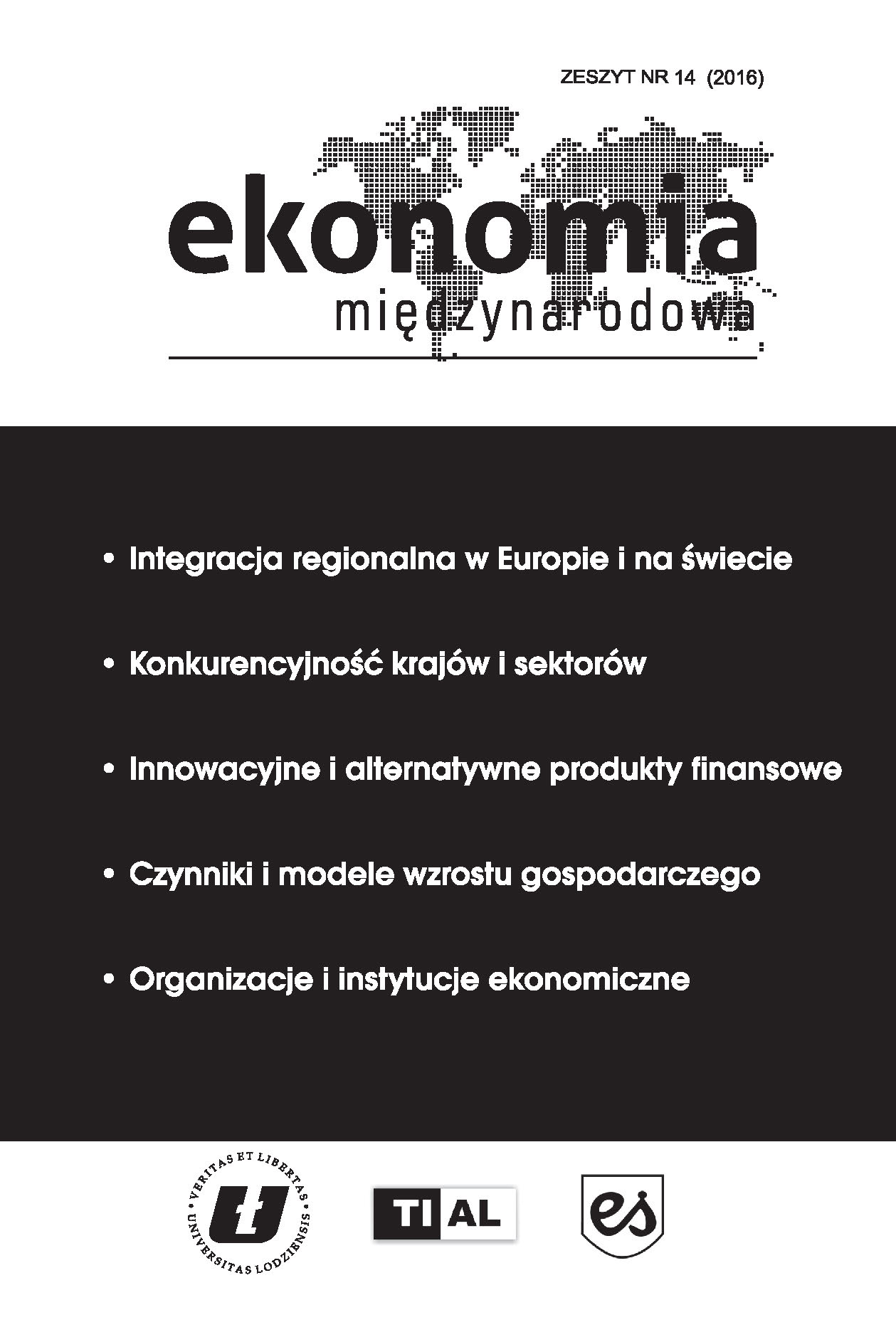Institutional Complementarity of Poland in Terms of Diversity of Capitalism
DOI:
https://doi.org/10.18778/2082-4440.14.03Keywords:
institutional complementarity, diversity of capitalism, cluster analysis, k-nearest neighbours method, k-mean method, principal component analysisAbstract
Poland is one of the most significant examples of a transition country in Central and Eastern Europe. After 45 years of being a centrally planned economy Poland emerged at the end of the 1980’s a free-market economy. In 2004 Poland became a member of the European Union, which was another milestone in the transition process. Undoubtedly, institutions were a very important factor in Poland’s economic transition. It seems that the horizon of 25 years since the fall of communism has created a decent prospect to evaluate the balance of economic transition in terms of the quality of institutions. However, comparative studies do not analyse institutions separately, but consider them together in an institutional framework.
The purpose of this essay is to examine the scope of the institutional complementarity of Poland in terms of Diversity of Capitalism. The main thesis of the article is that after more than two decades since the first stage of the economic transition, and one decade after joining the European Union, Poland’s institutional complementarity is, in general, at a satisfactory level. However, there is a very low level of institutional complementarity in the case of interaction between the labour market and the financial system. Furthermore, the Polish model of capitalism seems to be quite different from other countries from the peer group of transition economies (for example the Czech Republic or Hungary). The research method which was used in this essay includes statistical methods (in particular the K-Nearest Neighbours Method, K-Mean Method and Principal Component Analysis).
References
Amable B. (2003), The Diversity of Modern Capitalism, Oxford University Press.
Google Scholar
DOI: https://doi.org/10.1093/019926113X.001.0001
Arthur, B. (1994), Increasing Returns and Path Dependence in the Economy, Ann Arbor: University of Michigan Press.
Google Scholar
DOI: https://doi.org/10.3998/mpub.10029
Estevez-Abe M., Iversen T., Soskice D. (2001), Social Protection and the Formation of Skills: A Reinterpretation of the Welfare State, chapter in “Varieties of Capitalism: The Institutional Foundations of Comparative Advantage” edited by Hall P. and Soskice D., Oxford University Press.
Google Scholar
DOI: https://doi.org/10.1093/0199247757.003.0004
Friedman M., Friedman R. (1979), Free to Choose, Chicago Press.
Google Scholar
Gatti D., Rault Ch., Vaubourg A. (2010), Unemployment and finance: how do financial and labour market factors interact?, William Davidson Institute Working Paper No. 973, January 2010.
Google Scholar
Gross D., Steinherr A. (2005), Economic Transition in Central and Eastern Europe, Cambridge University Press.
Google Scholar
DOI: https://doi.org/10.1017/CBO9780511805646
Hoffmann I. (2010), Principal Component Analysis with FactoMineR, Institutfür Statistik und Wahrscheinlichkeitstheorie.
Google Scholar
Kolodko G., Rutkowski M. (1991), The Problem of Transition from a Socialist to a Free Market Economy: The Case of Poland, “The Journal of Social, Political and Economic Studies”, Summer, 1991, Vol. 16, No. 2.
Google Scholar
Krugman P., Wells R. (2005), Microeconomics, New York: Worth Publishers.
Google Scholar
Levine R. (1990), Stock Markets, Growth and Policy, “Board of Governors of the Federal Reserve System International Finance Discussion Papers”, No. 374.
Google Scholar
Matthews R.C.O. (1986), The Economics of Institutions and the Sources of Economic Growth, “Economic Journal 96:4, pp. 903–918.
Google Scholar
North D.C. (1990), Institutions, Institutional Change and Economic Performance, Cambridge University Press.
Google Scholar
DOI: https://doi.org/10.1017/CBO9780511808678
Sen A. (2007), Capability and well-being, chapter in “The Philosophy of Economics. An Anthology” edited by Hausman D.M., Cambridge University Press.
Google Scholar
Topkis, D.M. (1998), Supermodularity and Complementarity, Princeton: Princeton University Press.
Google Scholar
DOI: https://doi.org/10.1515/9781400822539
Williamson O. (2000), The New Institutional Economics: Taking Stock, Looking Ahead, “Journal of Economic Literature”, Vol. XXXVIII (September 2000), pp. 595–613.
Google Scholar
Yildiz M. (2010), Lecture Notes on Supermodular Games, MIT Open Course Ware.
Google Scholar
Downloads
Published
How to Cite
Issue
Section
License

This work is licensed under a Creative Commons Attribution-NonCommercial-NoDerivatives 4.0 International License.









